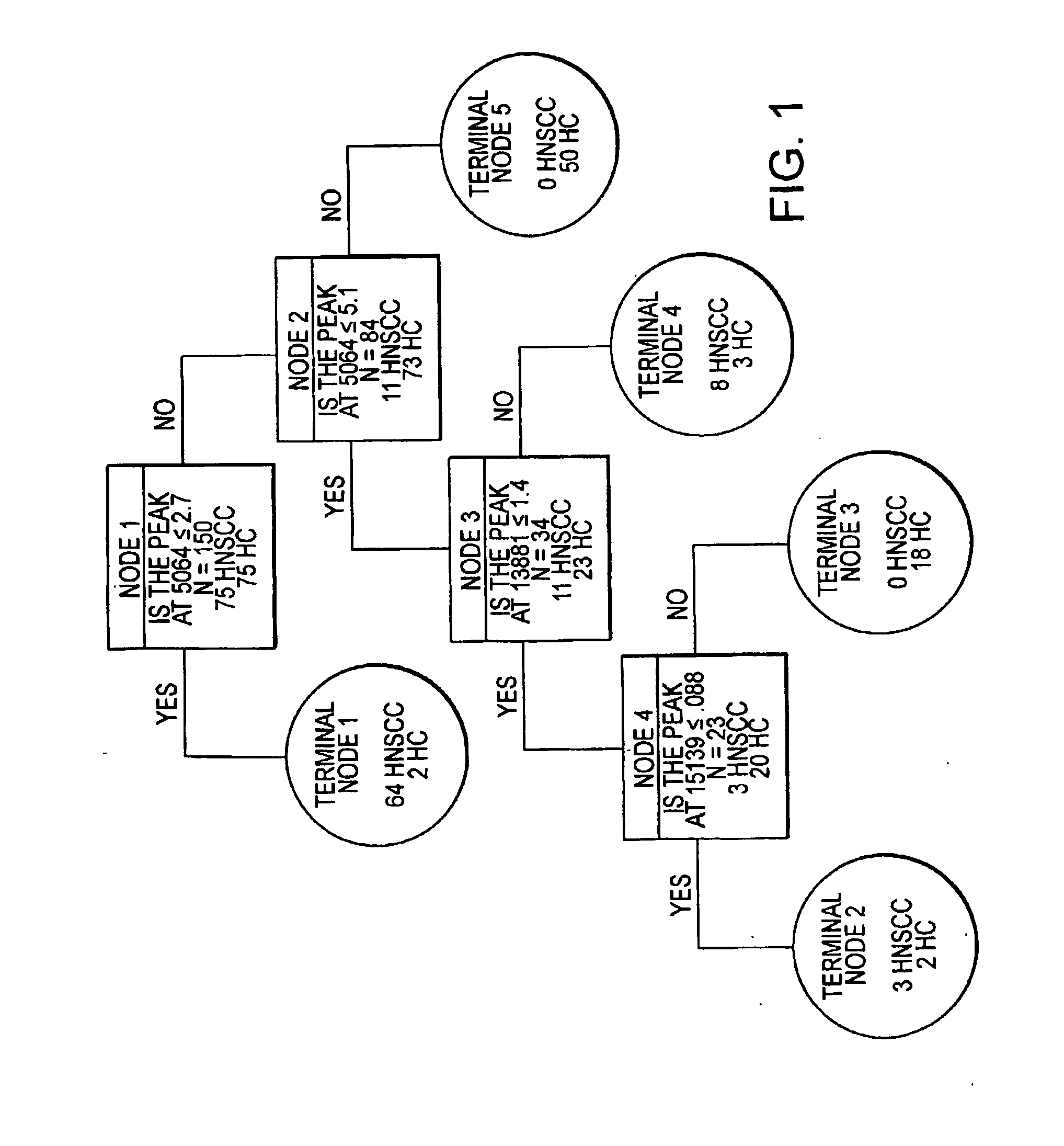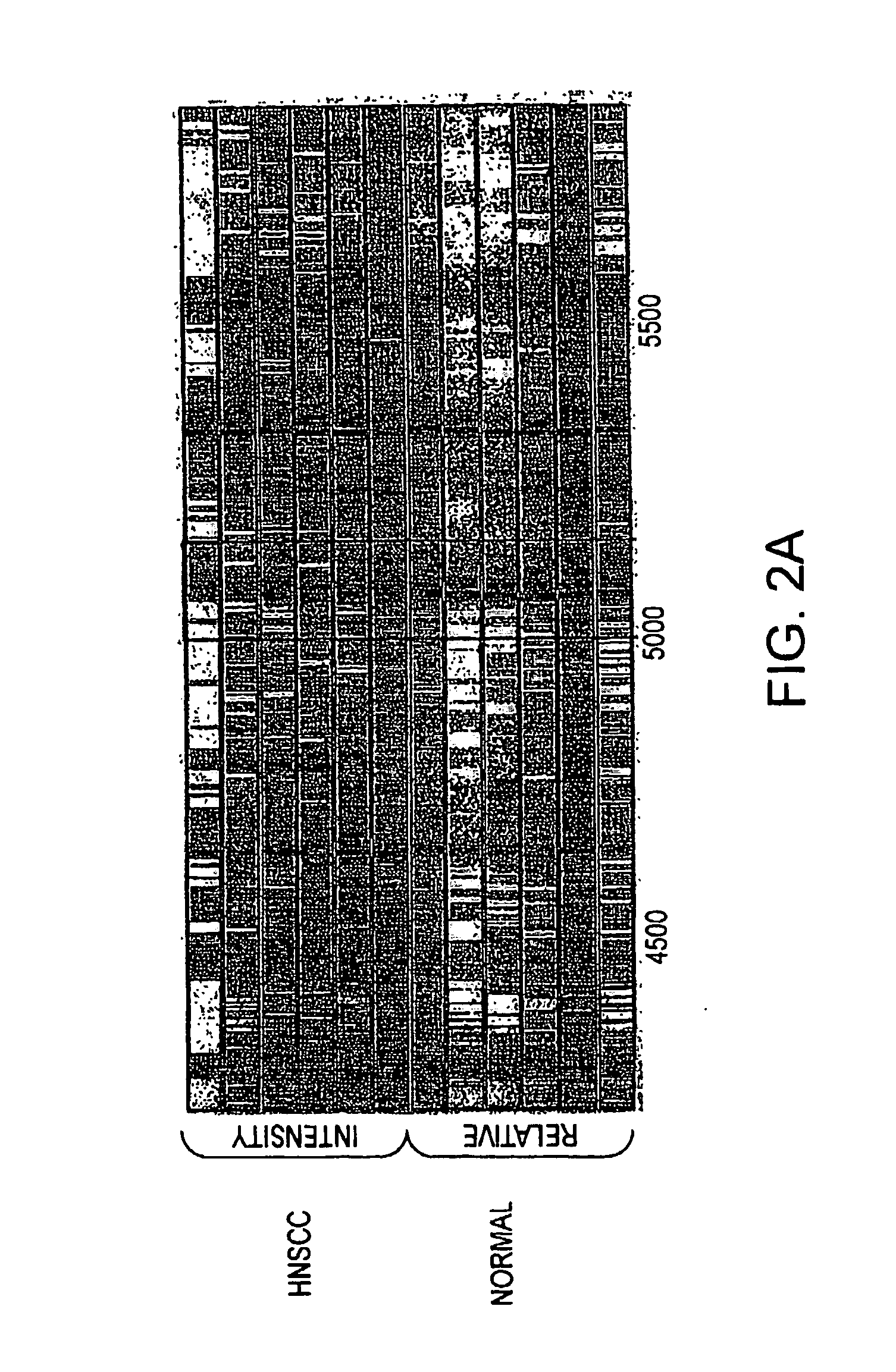Method for diagnosing head and neck squamous cell carcinoma
a squamous cell carcinoma and head and neck technology, applied in the field of head and neck squamous cell carcinoma diagnosis, can solve the problems of no accepted screening form for these cancers, no progress has been made towards improving survival rates, and excessive alcohol consumption
- Summary
- Abstract
- Description
- Claims
- Application Information
AI Technical Summary
Benefits of technology
Problems solved by technology
Method used
Image
Examples
example 1
[0095] Serum samples were obtained from the Saint Louis University School of Medicine and the Pennsylvania State University College of Medicine. The serum procurement, data management, and blood collection protocols were approved by the Eastern Virginia Medical School Institutional Review Board. After informed consent, whole blood was drawn from head and neck cancer patients and from non-smoking controls. The serum was separated out, aliquotted, and frozen at −80° C. until thawed specifically for SELDI analysis.
Patient and Donor Cohorts
[0096] Specimens from two groups of patients were used in this study: 99 samples from patients diagnosed with HNSCC and 102 samples from normal, non-smoking control patients.
SELDI Protein Profiling
[0097] Serum samples were processed for SELDI analysis as previously described using the IMAC3 Proteinchip® pre-treated with CuSO4 (Merchant, M., et al., Electrophoresis 21:1164-1177 (2000)). Briefly, 20 μl of serum was pre-treated with ...
PUM
| Property | Measurement | Unit |
|---|---|---|
| molecular weight | aaaaa | aaaaa |
| molecular weight | aaaaa | aaaaa |
| molecular weight | aaaaa | aaaaa |
Abstract
Description
Claims
Application Information
 Login to View More
Login to View More - R&D
- Intellectual Property
- Life Sciences
- Materials
- Tech Scout
- Unparalleled Data Quality
- Higher Quality Content
- 60% Fewer Hallucinations
Browse by: Latest US Patents, China's latest patents, Technical Efficacy Thesaurus, Application Domain, Technology Topic, Popular Technical Reports.
© 2025 PatSnap. All rights reserved.Legal|Privacy policy|Modern Slavery Act Transparency Statement|Sitemap|About US| Contact US: help@patsnap.com



